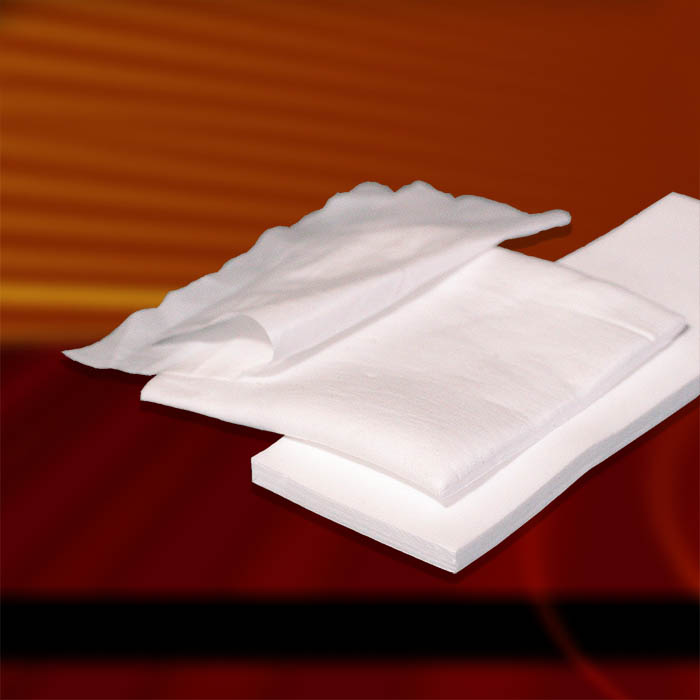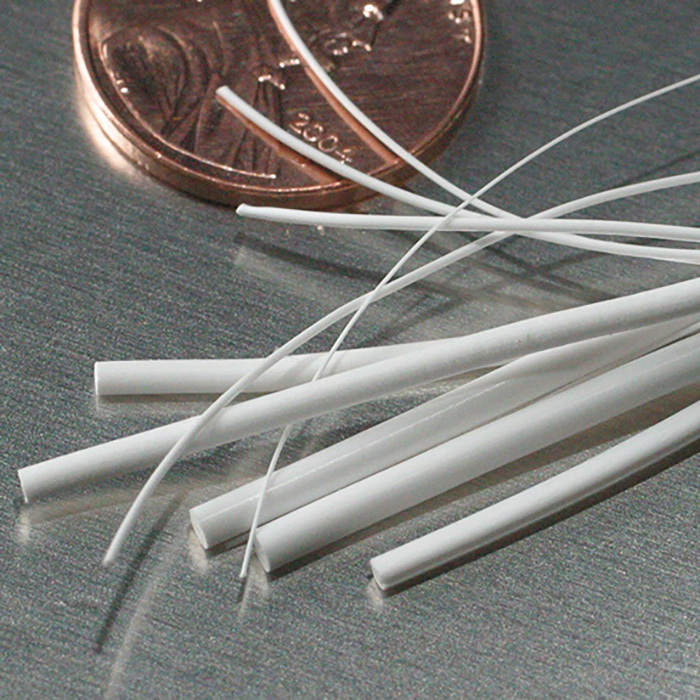
What is FluoroFlex™ ePTFE?
Polytetrafluoroethylene (PTFE) is a fully fluorinated polymer with exceptional chemical and physical properties: excellent chemical resistance, high temperature stability, good dielectric and non-stick properties and exceptional resistance to degeneration of mechanical properties under severe conditions. IPE can customize FluoroFlex™ ePTFE in a variety of densities to fit your individual application.
Material made from expanded FluoroFlex™ ePTFE offers you more than the standard properties of PTFE. Expanded FluoroFlex™ ePTFE is soft, flexible and porous. Porous FluoroFlex™ ePTFE is permeable to air, yet watertight under low pressure. Its low coefficient of friction makes it ideal for applications requiring lubricity and durability.
The structure of porous FluoroFlex™ ePTFE is key. IPE manufactures material which can be collapsed longitudinally without significant change in external diameter as demonstrated in the video below.
FluoroFlex™ ePTFE Sheets

IPE manufactures ePTFE sheet to customer specifications from 0.05mm to 6mm in thickness and a wide variety of material porosities to fit specific application requirements.
ePTFE sheet is the material of choice for a variety of applications including dental barriers and implants, barrier membranes, facial implants, venting, gasketing and chemical or temperature barriers to name a few. ePTFE sheet is cut into blanks for fabricating into smaller parts.
FluoroFlex™ ePTFE Rods

IPE manufactures ePTFE rods to customer specifications from 0.20mm to 9.5mm O.D. and can be spooled or cut to length. Rods are extruded of ePTFE and are used for all kinds of medical components where the outstanding performance characteristics of ePTFE are required. ePTFE rods are the material of choice for a variety of applications including sutures, strain relief devices, facial implants, sewing thread, filtration, and wicking devices
(to name a few).
FluoroFlex™ ePTFE Tubes

IPE manufactures ePTFE tubes to customer specifications from 0.7mm to 22mm I.D. with wall thicknesses ranging from .05mm to 1mm. Tubes are extruded in ePTFE and are used for medical components where the outstanding performance characteristics of ePTFE are required. ePTFE tubing is the material of choice for a variety of applications including bending sections, instrument covers, stent covers, endoscopic working channels, ozone delivery, vascular devices and aeration and deaeration of caustic fluids
(to name a few).
Industries
- OEM Components for Medical (suture components, vascular components, endoscopic working channel components, and more)
- OEM Components for Industrial (Aeration, filtration, pumps, seals, water treatment, and more)
Chemical and Physical Properties
- Excellent resistance to caustic chemicals
- Low dielectric constant
- Low coefficient of friction
- Non-flammable
- Service temperature range: -200˚ C to 260˚ C
Characteristics
- Biocompatible
- Flexibility
- Kink resistance
- Softness
- Weather resistant
- Hydrophobic
FluoroFlex™ ePTFE Porosity
The microstructure of FluoroFlex™ ePTFE can be described as roughly parallel-running clumps of material (nodes) with perpendicular fibers connecting them. Fibers connected between the nodes are called fibrils. Porosity is a function of the distance between the nodes. As the internodal distance decreases, porosity decreases. Conversely, as the internodal distance increases, porosity increases.
Porous ePTFE can also be classified in volume densities. IPE has the capability of producing ePTFE in volumes densities ranging from .30 to 1.3 grams per cubic centimeter. Higher density ePTFE would be less porous and more rigid, lower density would be more porous and flexible.
When looking for a highly flexible, lubricious, chemically inert, hydrophobic plastic for critical applications, very few non-woven plastics can meet or exceed the flexural properties needed in barrier, instrument delivery, and bending sections of typical medical implants and industrial instruments like our FluoroFlex™.
